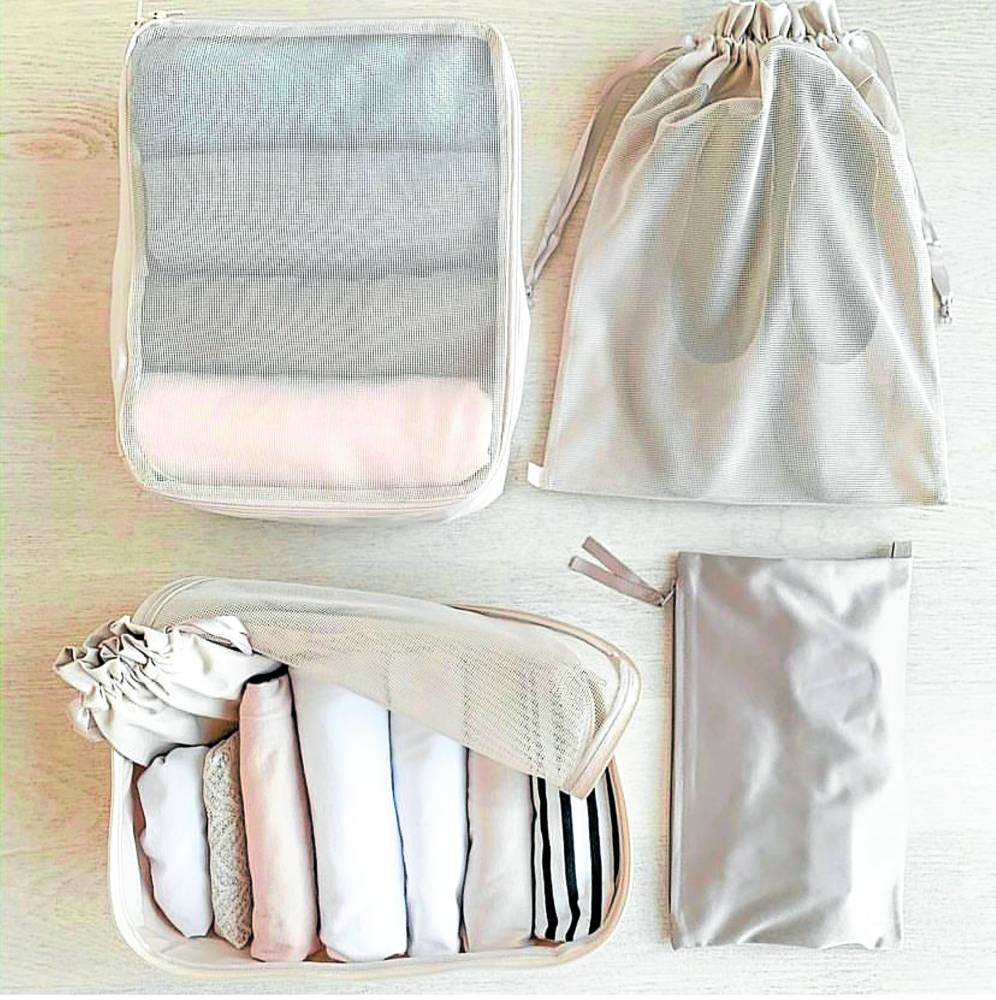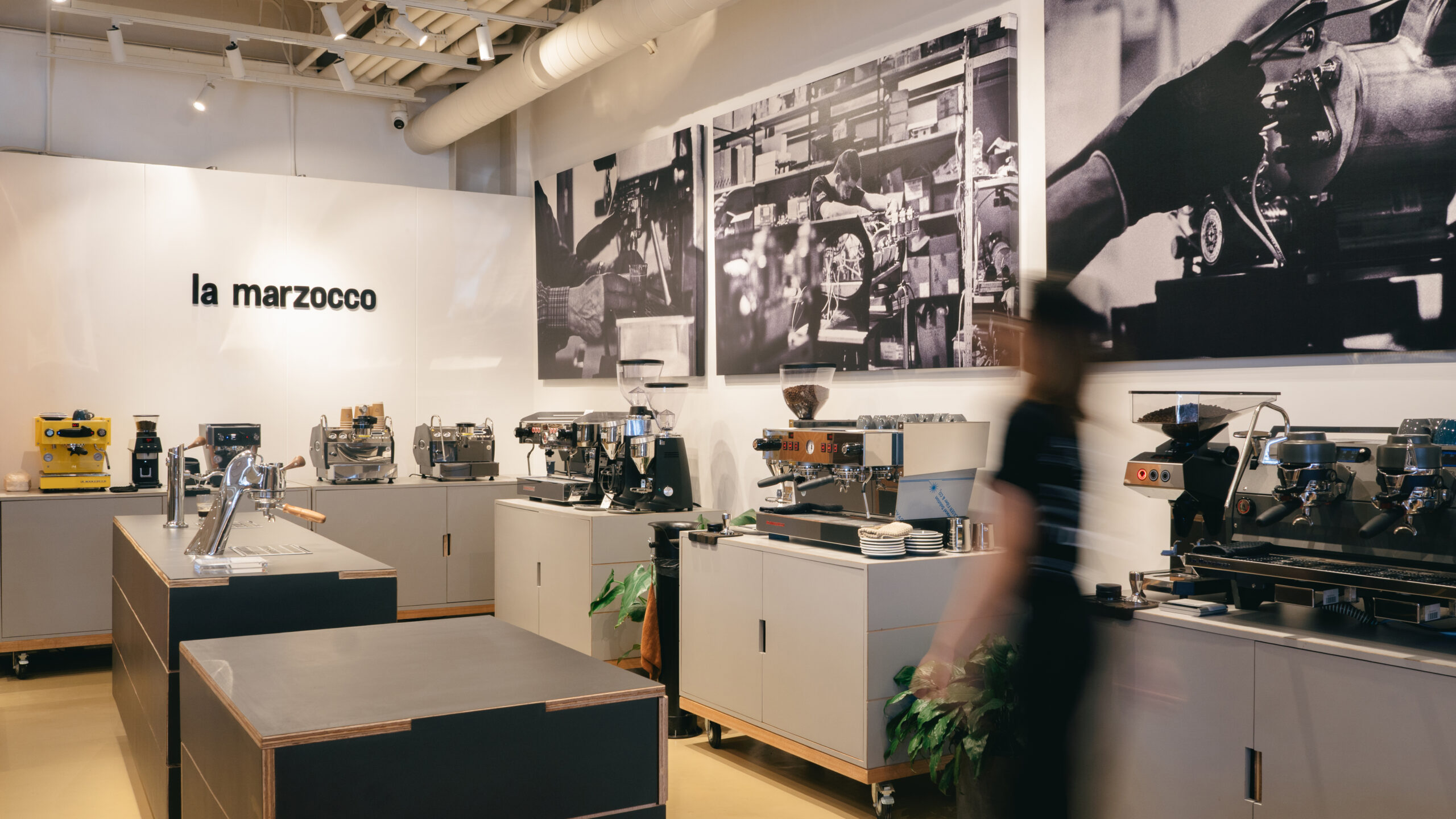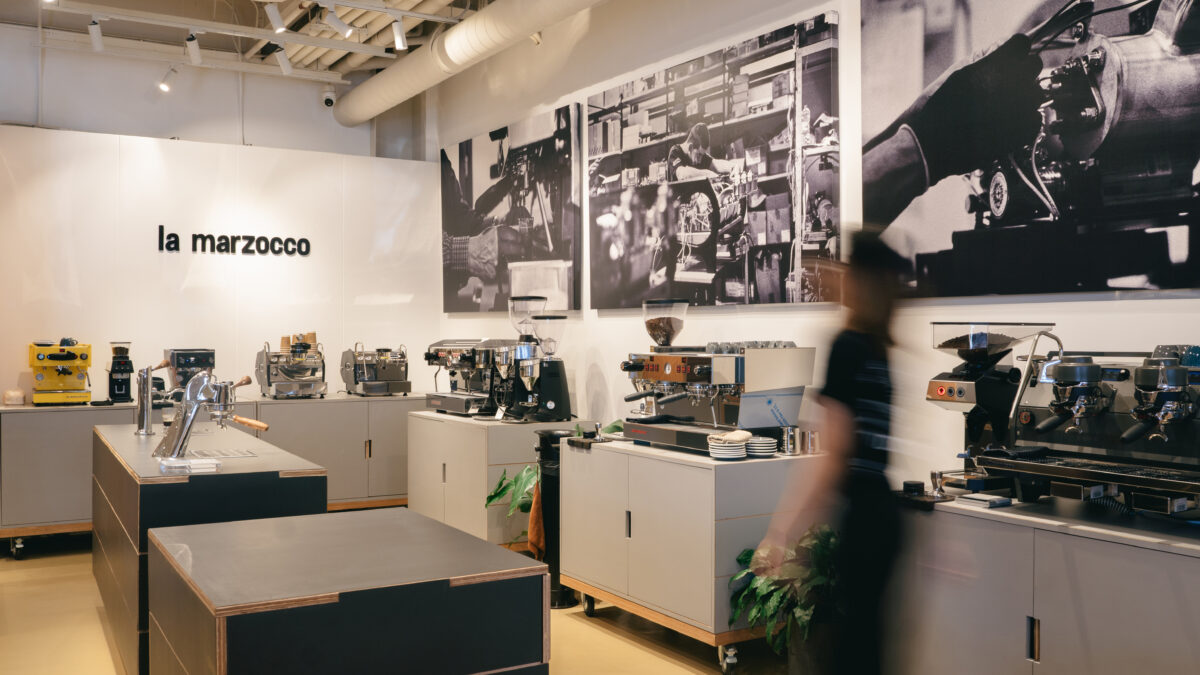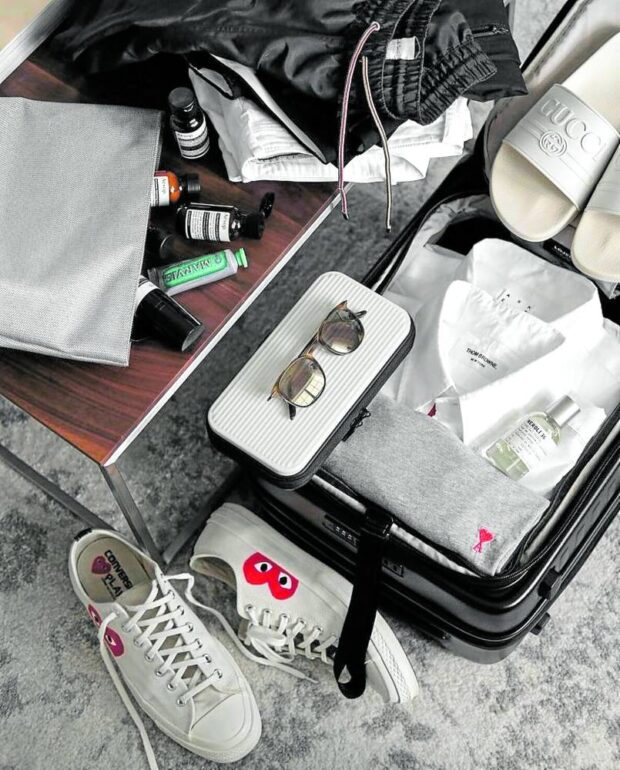
Packing for a trip without overpacking is a skill that even some seasoned travelers have trouble mastering. Packing for a long trip without overpacking and still looking stylish at your destination presents an even greater challenge.
Those tall boots would look so nice for the ’Gram, but they’re bulky and heavy. And how many looks can you even wear them with? Are they comfy for long walks?
I recently went on a 10-day trip to Türkiye, and packing the lightest became sort of a contest between me and my travelmates. We were flying business class on the long-haul leg, which means we had more baggage weight allowance, but we were also taking coach-class domestic flights at our destination.
That presents an issue when you shop heavy stuff later—those Turkish Delight pasalubong can literally tip the scales. So prepare to cough up some moolah if you overdo it. You’d be so lucky if you’re traveling with people who would willingly “adopt” your excess baggage because they packed sensibly and have room.
Even as an avid shopper and a serial almost-overpacker—bringing an extra outfit (or pair of shoes) or two never hurt anybody—I can proudly say that I have never come close to paying for excess baggage. Ever.
Here are a few tips that could help you, too, on your next trip:
1. Plan your outfits in advance for each day of the trip. This will help you avoid overpacking by ensuring that you only bring what you need, no spreadsheets required. Consider the activities you’ll be doing and the weather forecast for the trip. Will the weather be just cool enough for light layers, or would you need a heavier coat? Will you be going to temples or mosques that have modest dress codes?
2. Stick to a color scheme that can be mixed and matched easily. This will allow you to create different outfits with a few key pieces. You can be forgiven for repeating items, even for the ’Gram—heavier jeans and outerwear can do double duty and be reworn with other pieces throughout your trip.
Versatile
3. Bring versatile pieces. Pack items that can be dressed up or down, such as a little black dress, a versatile blazer, or a pair of comfortable yet stylish shoes. I am usually guilty of overpacking shoes, but on this recent trip, I stuck to only three pairs of sneakers as we would not be going to dressier places. A shoe expert once told me that shoes need to rest 24 hours between wear, to give them a chance to air out (or they’ll stink!) and keep their shape. So I maintain that you need to rotate your shoes even when traveling.
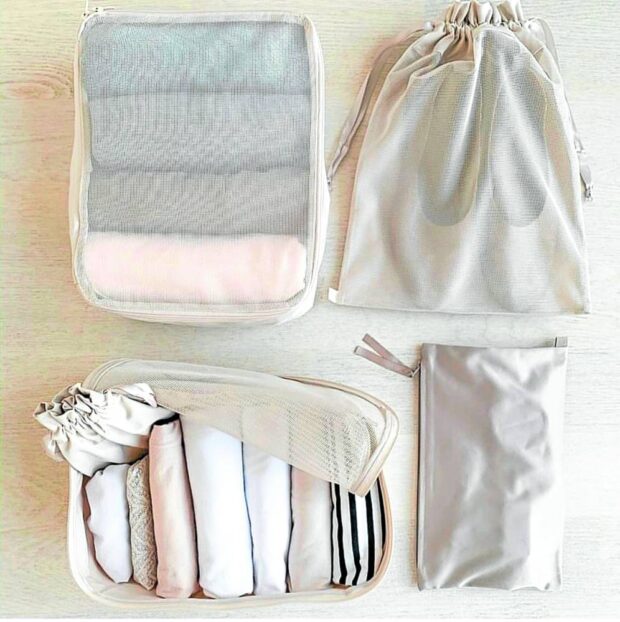
4. Roll your clothes, instead of folding them, to help you save space in your luggage. A caveat: Do this only with clothes that wrinkle minimally—unless you enjoy ironing clothes in hotel rooms (really?). So just pack clothes that don’t wrinkle much.
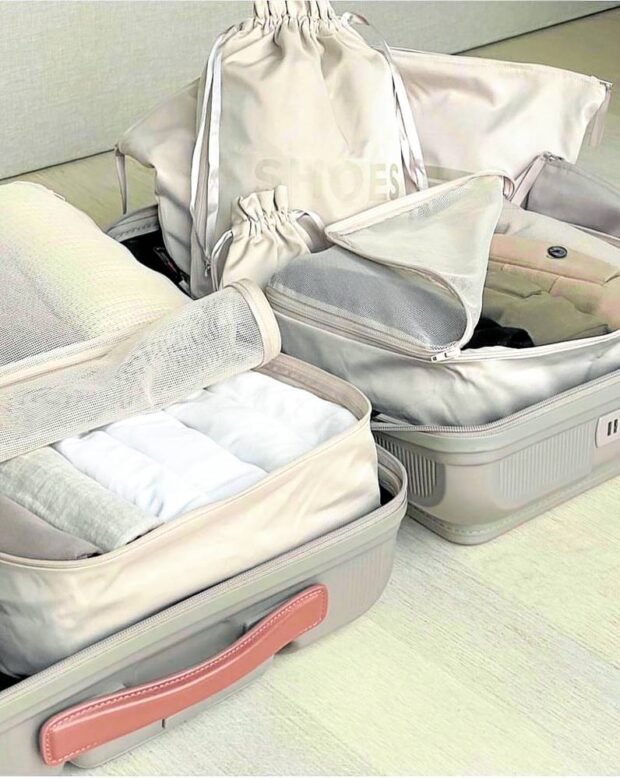
5. Use packing cubes. I’ve been a fan of packing cubes for many years. They can help you stay organized and make it easier to find what you need without having to unpack your entire suitcase. I typically pack tops in one cube, bottoms in another, etc. Have a spare packing cube for laundry.
6. Pack travel-sized toiletries. To save space and weight, decant your regular products into smaller containers. Don’t assume that the “nice” hotels would have the toiletries that you need—pack your own dental kit; bring hair products in sachets if you must. But hotels have hairdryers, so leave yours at home!
7. Wear your bulkiest items on the plane, like a coat or boots. This will save space in your luggage.
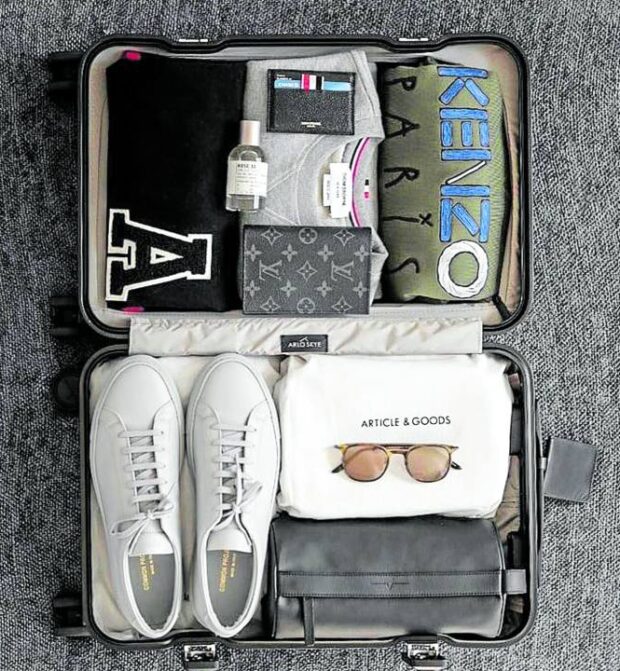
8. Accessorize. Accessories can add variety to your outfits without taking up much space. Pack a few statement pieces like a scarf, statement necklace or a pair of sunglasses. Again, you can rewear your clothes, but accessorize them for variety.
9. Consider laundry options. If you’re traveling for more than a week, you may need to do laundry. Look into options at your destination, such as hotel laundry services or local laundromats. This usually solves issues of overpacking. Then, you’ll also have more room for your shopping.
10. Don’t forget the essentials. Make sure to pack items such as medications, chargers and adaptors, and travel documents in your carry-on bag. And get local currency. In Türkiye, we found that using our Philippine-issued credit cards can be quite a challenge, as transactions mostly require a password/PIN. Withdrawing cash from the ATM is also very complicated or have steep convenience fees.

